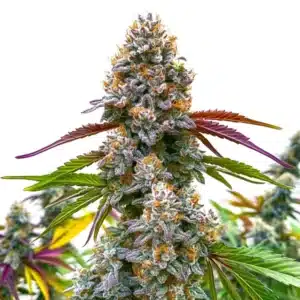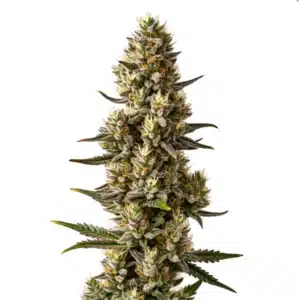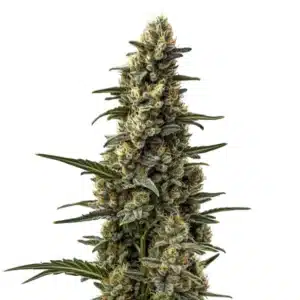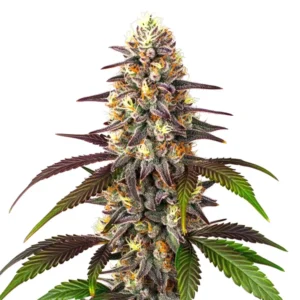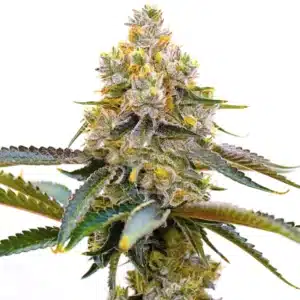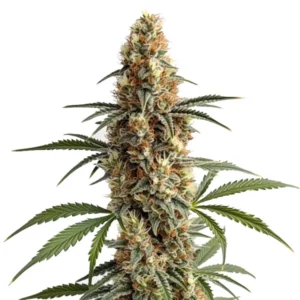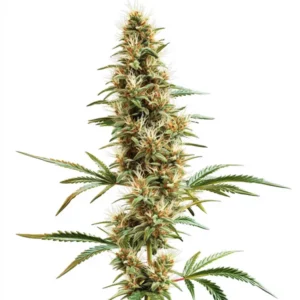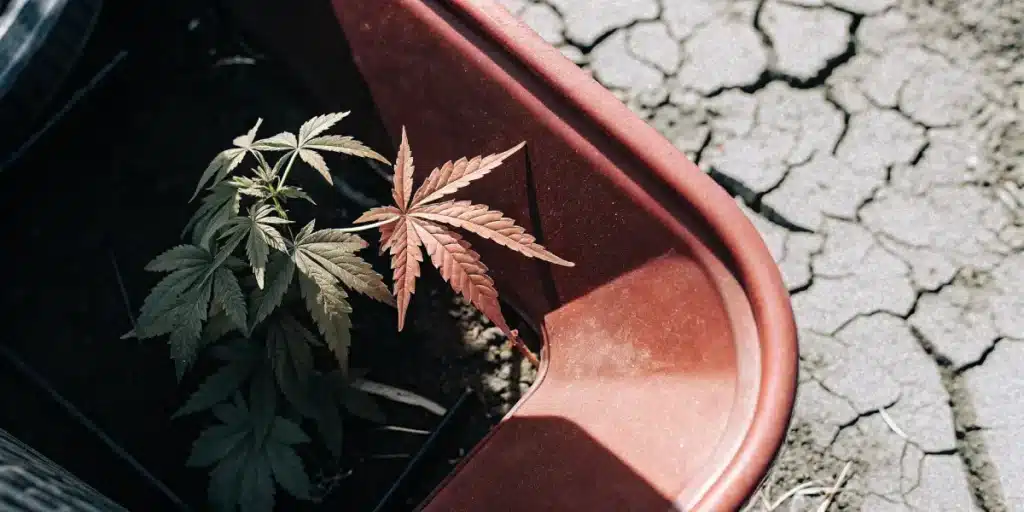
Plant Osmoregulation and Water Stress in Cannabis
Water stress can be a major challenge for cannabis growers. When your plants don’t get enough water, it affects their growth and overall health. Plant osmoregulation and water stress in cannabis involve a complex interaction of biological processes that help plants cope with such conditions. If you’re new to growing cannabis or even if you’re a seasoned grower, knowing these processes can significantly improve your yield.
Plant osmoregulation is the way plants manage their internal water balance, crucial for maintaining cell turgor, which keeps the plant upright and aids in growth. When cannabis plants face water stress, their osmoregulatory mechanisms kick in to help them survive. These mechanisms are vital, especially when you’re growing strains like Blue Dream, which is known for its resilience under varying conditions.
Recommended Strains
Blue Dream
|
|
THC | 17% - 24% (Medium) |
|
|
Type | Feminized |
|
|
Yield | High |
|
|
Phenotype | 50% Indica / 50% Sativa |
Critical Daddy Purple
|
|
THC | 19% (Medium) |
|
|
Type | Feminized |
|
|
Yield | High |
|
|
Phenotype | 50% Indica / 50% Sativa |
By mastering plant osmoregulation and water stress in cannabis, you can ensure your plants remain healthy even when water is scarce. This article will explore how cannabis plants adapt to water scarcity, the effects of water stress on cannabis growth, and how you can optimize your yield under such conditions.
Cannabis Osmoregulation Under Drought Conditions
During drought conditions, cannabis plants exhibit specific osmoregulatory responses. These responses include closing their stomata, the tiny pores on leaves, to reduce water loss. While this helps conserve water, it also limits the intake of carbon dioxide, affecting photosynthesis and growth. It’s a delicate balance.
In such scenarios, choosing the right strain can make a big difference. For example, the Critical Daddy Purple strain from Blimburn Seeds is known for its ability to thrive in less-than-ideal water conditions. This strain’s adaptability makes it a popular choice among growers dealing with unpredictable water supply.
Cannabis osmoregulation under drought conditions is not just a survival mechanism; it is also a way for plants to optimize their physiological processes. By adjusting their internal water balance, cannabis plants can maintain metabolic functions even in low-water environments. Knowing this adjustment can help growers tailor their irrigation practices to support plant health.
Moreover, cannabis osmoregulation under drought conditions can also lead to genetic adaptations over time. Strains that consistently face water stress may develop enhanced osmoregulatory capabilities, making them more resilient in the long term. This evolution benefits growers who focus on sustainability and resource management.
Osmoregulatory Mechanisms in Cannabis Plants
Cannabis plants employ several osmoregulatory mechanisms to survive under water stress. One of these is the accumulation of solutes like sugars and amino acids in their cells. These solutes help retain water by creating an osmotic gradient that draws water into the cells, keeping them turgid.
Another mechanism is the production of abscisic acid (ABA), a hormone that signals the closure of stomata. This reduces water loss but also highlights why it’s crucial to monitor environmental conditions closely. For instance, if you’re growing a strain like Gelato, which requires specific humidity levels, knowing these mechanisms can help you adjust your growing environment accordingly.
These osmoregulatory mechanisms in cannabis plants are essential for maintaining cellular homeostasis. By regulating water retention and loss, these plants can continue to photosynthesize and grow, even when external conditions are less than ideal. This adaptability is a testament to the resilience of cannabis under different environmental stresses.
Furthermore, osmoregulatory mechanisms in cannabis plants can also influence nutrient uptake. With efficient water regulation, the plants can better absorb and utilize nutrients, which directly impacts their growth and overall health. This interconnectedness underscores the importance of knowing plant osmoregulation and water stress in cannabis cultivation.
Promos & Deals
Water Stress Effects on Cannabis Growth
Water stress can have several effects on cannabis growth, from stunted development to reduced yield. Without enough water, plants can’t transport nutrients effectively, leading to deficiencies. Leaves may turn yellow, and in severe cases, the plant might not survive.
However, not all effects are negative. Some water stress can actually stimulate certain plant responses, making them stronger. For instance, moderate stress can lead to an increase in trichome production, potentially enhancing the potency of your cannabis. This is particularly beneficial when growing high-THC strains like Purple Kush.
Water stress effects on cannabis growth can also lead to changes in plant morphology. In response to limited water availability, cannabis plants may develop thicker leaves with reduced surface area to minimize water loss. This adaptation helps them conserve moisture, allowing them to survive longer periods without water.
Additionally, water stress effects on cannabis growth can trigger biochemical changes within the plant. The synthesis of stress-related proteins and secondary metabolites may increase, offering the plant enhanced protection against environmental challenges. These changes can sometimes fortify the plant, resulting in a more robust and resilient crop.
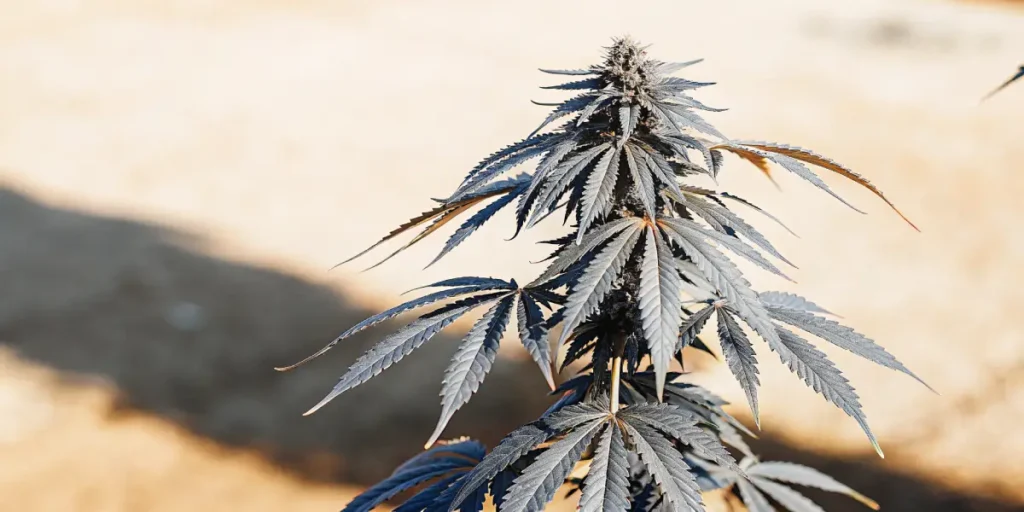
Optimizing Cannabis Yield Under Water Stress
Optimizing cannabis yield under water stress involves finding the right balance between water conservation and plant growth. One effective strategy is to use mulching, which helps retain soil moisture and regulate temperature. This is especially useful for outdoor growers.
Drip irrigation is another technique that allows for precise water delivery directly to the plant roots, minimizing waste. This method is efficient and can be tailored to the specific needs of each cannabis strain. Coupled with regular monitoring of soil moisture levels, it can significantly boost yields.
For those looking to optimize cannabis yield under water stress, selecting the right soil type is also crucial. Well-draining soils that retain moisture efficiently can help support plant growth even when irrigation is limited. This consideration can make a significant difference in maintaining plant health during water-scarce periods.
Moreover, optimizing cannabis yield under water stress can benefit from using growth-promoting substances like mycorrhizal fungi. These symbiotic organisms enhance nutrient uptake and improve water absorption, supporting the plant’s growth under challenging conditions. Integrating these strategies can help maximize yields despite water limitations.
Cannabis Plant Adaptation to Water Scarcity
Cannabis plants adapt to water scarcity through various physiological and morphological changes. One such adaptation is the development of a deeper root system, which allows the plant to access water from deeper soil layers. This is particularly advantageous in arid regions.
Leaf morphology also plays a role. Some cannabis strains develop smaller leaves to reduce the surface area for water loss. This adaptation helps conserve water without compromising photosynthesis, crucial for plant growth. Monitoring these changes can provide insights into your plant’s health and water needs.
Cannabis plant adaptation to water scarcity is not just about survival; it’s also about thriving in challenging environments. By leveraging their natural resilience, these plants can produce healthy yields even when water availability is less than optimal. This adaptability is a key factor for growers in arid regions.
Furthermore, cannabis plant adaptation to water scarcity can lead to the development of unique phenotypes. Strains that consistently face water stress may exhibit distinct characteristics, such as increased trichome density or altered cannabinoid profiles. These variations can add value to the final product, offering growers a competitive edge.
Strains Adapted to Water Scarcity
Choosing strains that are naturally adapted to water-scarce conditions can make your growing experience smoother. The Critical Daddy Purple strain, for instance, is known for its robust nature and ability to thrive with minimal water.
Similarly, the Blue Dream strain is favored for its resilience and adaptability. Its ability to withstand water stress without significant yield loss makes it a reliable choice for both novice and experienced growers.
Strains adapted to water scarcity often exhibit unique growth patterns and characteristics. These plants may develop deeper root systems or thicker stems to support their survival under water-limited conditions. Such traits are advantageous for growers facing inconsistent water supply.
Moreover, strains adapted to water scarcity are often more resistant to other environmental stresses, such as heat or nutrient deficiencies. This resilience makes them an ideal choice for growers looking to maintain consistent yields despite challenging conditions. By selecting these strains, growers can ensure a more successful cultivation experience.
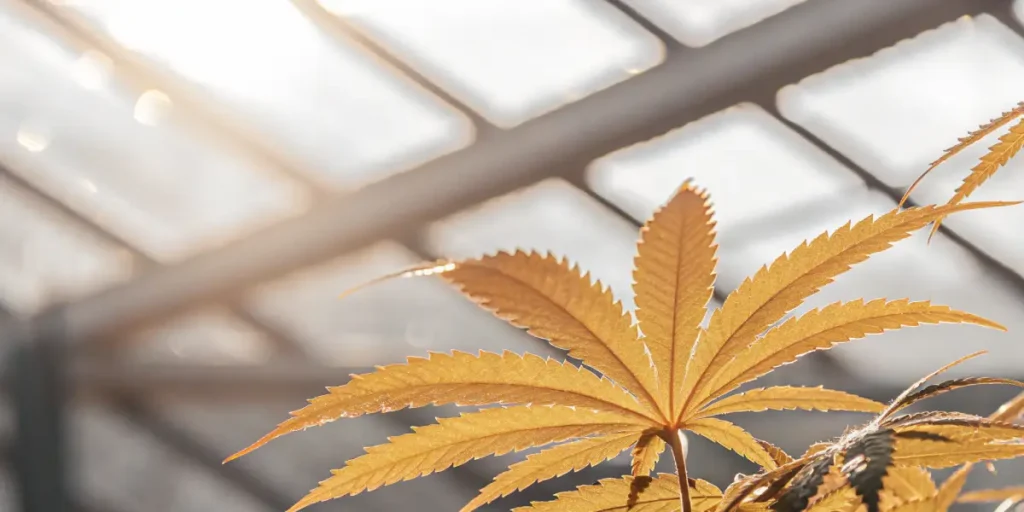
FAQs on Plant Osmoregulation and Water Stress in Cannabis
How does water stress affect cannabis growth?
Water stress can lead to stunted growth and reduced yields in cannabis plants. When plants don’t receive enough water, they struggle to transport nutrients, leading to deficiencies. This can cause leaves to yellow and may even kill the plant if not addressed promptly.
However, mild water stress can sometimes be beneficial. It can increase trichome production, potentially enhancing the plant’s potency. Knowing how to manage water stress is crucial for optimizing cannabis growth and ensuring a healthy harvest.
Water stress effects on cannabis growth are multifaceted, influencing not only the plant’s physical development but also its biochemical processes. By knowing these effects, growers can better tailor their cultivation practices to mitigate negative impacts and enhance positive outcomes.
Additionally, managing water stress effectively can lead to increased plant resilience. By exposing plants to controlled stress levels, growers can encourage the development of hardier plants that are better equipped to handle future environmental challenges. This approach can lead to more sustainable and productive cultivation practices.
What are osmoregulatory mechanisms in cannabis plants?
Osmoregulatory mechanisms in cannabis involve processes that help the plant maintain water balance. These include accumulating solutes like sugars and amino acids in cells to draw water in and producing hormones like abscisic acid to close stomata and conserve water.
These mechanisms are vital for helping cannabis plants survive during drought conditions. By knowing these processes, growers can better manage water stress and improve plant resilience and yield.
Osmoregulatory mechanisms in cannabis plants are an integral part of their survival strategy in fluctuating environmental conditions. These mechanisms allow plants to maintain cellular integrity and function when external water availability is limited, ensuring continued growth and development.
Furthermore, osmoregulatory mechanisms in cannabis plants are closely linked to their genetic makeup. Breeding programs that focus on enhancing these traits can lead to the development of new strains that are even more resilient to water stress, providing growers with more robust cultivation options.
Which cannabis strains are best for drought conditions?
Some cannabis strains are naturally more resilient to drought conditions. Critical Daddy Purple, Blue Dream, and Gelato are excellent choices for growers dealing with water scarcity. These strains are known for their robust nature and ability to thrive with limited water.
By selecting drought-resistant strains, growers can reduce the impact of water stress and ensure a healthy, productive crop. These strains offer a reliable option for both new and experienced growers.
Choosing the best cannabis strains for drought conditions involves considering not just water needs but also the overall growing environment. Strains that thrive in arid conditions often have traits that make them suitable for other challenges, such as high temperatures or poor soil quality.
Moreover, the best cannabis strains for drought conditions can also offer unique flavor profiles and cannabinoid compositions. By exploring these options, growers can discover new favorites that meet both their cultivation needs and consumer preferences, creating a win-win scenario.
How can I optimize cannabis yield under water stress?
Optimizing yield under water stress involves using techniques like mulching and drip irrigation to conserve water and deliver it efficiently to plants. Regular soil moisture monitoring also helps in adjusting watering schedules to meet plant needs.
By knowing plant osmoregulation and water stress in cannabis, growers can create an environment that minimizes stress while maximizing yield. Choosing the right strains, like those from Blimburn Seeds, further enhances these efforts.
Developing strategies to optimize cannabis yield under water stress also includes selecting the right growth medium. Substrates that retain moisture while allowing for adequate drainage can help maintain an optimal water balance for the plants, promoting healthy growth.
Additionally, integrating technology into cultivation practices can further enhance yield optimization. Automated irrigation systems and environmental monitoring tools can provide real-time data, allowing growers to make informed decisions and respond quickly to any changes in plant needs or environmental conditions.
What adaptations do cannabis plants have for water scarcity?
Cannabis plants adapt to water scarcity through deeper root systems and smaller leaves to reduce water loss. These adaptations help them access water from deeper soil layers and conserve moisture, essential for surviving arid conditions.
Monitoring these adaptations provides insights into your plant’s health and water requirements. By selecting strains with these traits, growers can better manage water stress and ensure successful cultivation.
The adaptations cannabis plants have for water scarcity also include changes in growth patterns. Under water-limited conditions, plants may enter a slower growth phase, conserving resources until conditions improve. This strategic growth adjustment helps ensure long-term survival.
Additionally, cannabis plants may develop a thicker cuticle layer on their leaves, reducing water loss through evaporation. This physical barrier provides an additional layer of protection against dehydration, allowing the plants to maintain their vital functions even in challenging environments.



